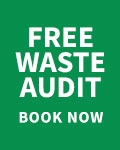Our director, Robbie McKernan & Gary Moore from UNTHA Shredding Technology, recently spoke to Inside Waste about tyres — exploring whether they’re a waste headache or crucial part of Australia’s resource infrastructure.
If you missed the original article, catch up here…
—
As the country prepares for the export ban on scrap tyres* in 2021, it’s perhaps unsurprising that this notoriously problematic waste has dominated the industry’s headlines in recent times.
With a reported 1.5 billion tyres reaching their end of life worldwide, every year – and a worrying 60% of these said to be landfilled, stockpiled, illegally dumped or ‘lost’ from the resource chain – they represent a notable challenge. The environmental impact of their unscrupulous handling is also vast – not least when stockpile fires break out unexpectedly or are deliberately started, to solve the mounting waste issue.
It therefore goes without saying that used tyre exporting is an unsustainable practice which needs to stop. But for decades there has been no ‘quick fix’ when it comes to how this waste stream is handled. The complex make-up of this product and a lack of engineering advancement in this specific area, means that tyres have long been considered economically unviable to process. And profit is not a dirty word after all, so firms should not be criticised for striving to make money.
But this does not mean that the tyres themselves have no resource potential. In fact, with so much conversation surrounding this material stream, now is arguably the time to look at the most responsible way of managing this complex rubber product, for maximum environmental and commercial gain.
Market developments
Thankfully, engineering advancements mean that end-of-life tyres should no longer be considered a waste headache. In fact, as the world strives for greater resource security and reduced reliance on ever-depleting fossil fuels, they could even become an industry hero – particularly at a time when valuable recyclables are in short supply due to COVID-19.
Highly sought-after steel is ‘locked’ within whole tyres, for example. However, a carefully-designed tyre shredding line can liberate these metals from the composite material, for segregation and resale. The rubber can also be transformed into a homogenous product that can be used for road base, tip cover, landscaping and playground safety surfaces. And any residual material can then be utilised in energy recovery processes including thermal desorption, to produce fuel oils and clean gas for electricity generation, plus a burn-efficient tyre derived fuel (TDF) for the cement industry.
The wealth in ‘waste’
Processing tyres for recycling and energy recovery sounds like a complex task, and of course sophisticated machinery must lie at the heart of such an operation. But as is often the case, ultra-clever technology can in fact be very simple to run. What’s more – acknowledging the long-standing difficulties associated with making money from this once-deemed-unshreddable waste stream – tyre processing systems are actually now designed with profitability in mind. In fact, many waste handlers have achieved a payback period as short as 18 months.
Key to maximising ROI, is the design of a tyre processing line that can produce a contaminant-free, homogenous output, in a single pass. This reduces the capital required to build the system. If the technology is flexible and can be easily reconfigured to handle different input materials – including standard car or passenger tyres, through to more rugged truck and OTR tyres, and more – the investment is further protected. And if various output specifications ranging from 30-400mm can be satisfied – depending on end user requirements – routes to market should open up too, to minimise risk.
The technology must be engineered to withstand the pressures of this tough, bulky waste stream, of course, and a slow-running machine with high torque should ideally be sought. This will ensure minimal wear and long service intervals, as well as maximum plant uptime, low maintenance costs, without any detriment to throughputs. A capacity of 8-10 tonnes per hour should be comfortably achievable, with operator safety always protected.
What’s next?
Some savvy global firms are already way ahead of this curve, and for these forward-thinking businesses, all eyes are now on harnessing engineering developments to maximise their plants’ margins.
Others are developing a newfound realisation of the resource potential of tyres – an awareness that is only going to grow. In fact, a product that has long proven troublesome for many, could soon emerge as a widely recognised and important piece of the environmental jigsaw.
* The Australian Government website states that the export of whole used tyres, including baled, will be banned from December 20201. However, this does not apply to bus, truck and aviation tyres exported to a verified facility for re-treading.
https://www.environment.gov.au/protection/waste-resource-recovery/waste-export-ban


